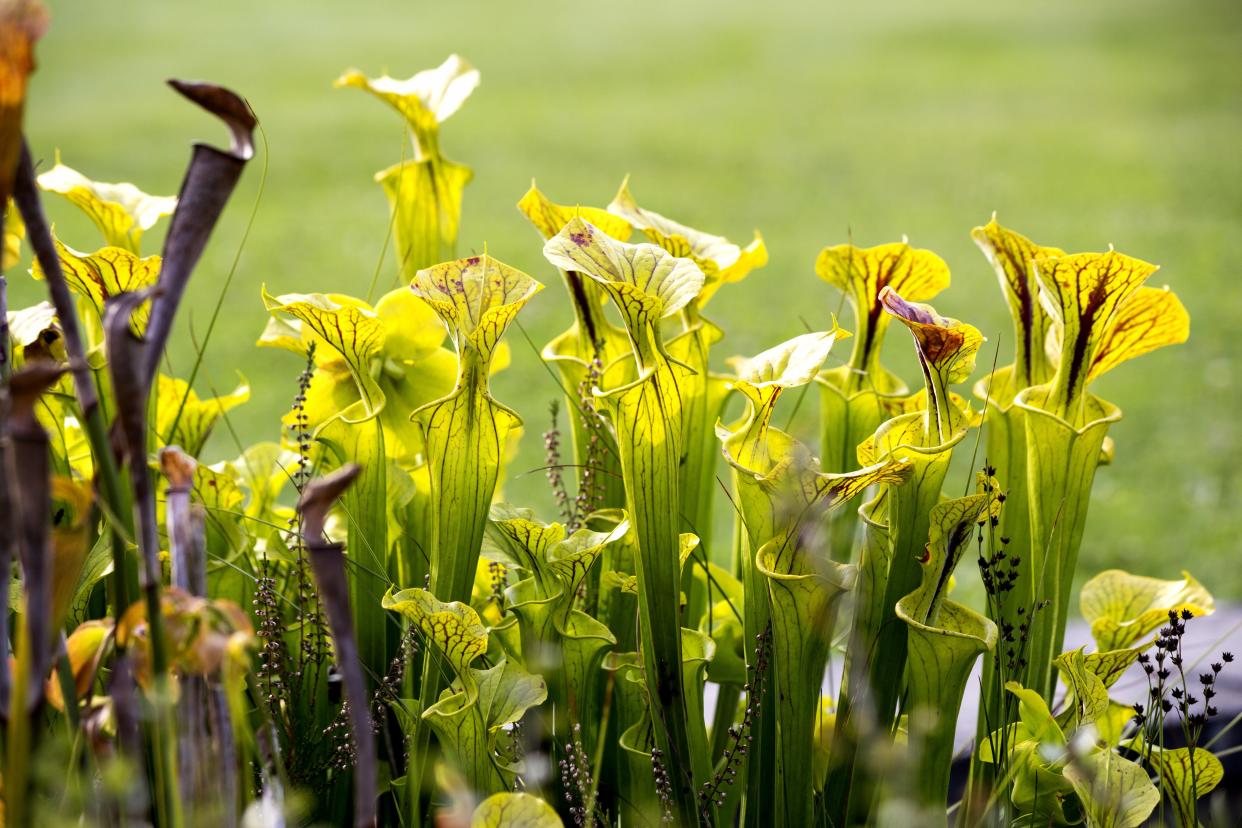How to Care for Pitcher Plants

If you’re looking to plant something out of the ordinary in your garden, look no further than the pitcher plant, an eye-catching, carnivorous planting that loves lots of sun. Pitcher plants are species belonging to the genus Sarracenia and family Sarraceniaceae. They’re unexpected additions to Southern gardens, yet they’re native to the region and relatively easy to grow, making them one of the easiest ways to add interest to your planting plans. Read on for all the information you need to make pitcher plants at home in your garden this year.
What Do Pitcher Plants Look Like?
These plants produce colorful flowers in spring and can most readily be identified by their unmistakable “pitchers”, modified leaves that look like hollow, tube-shaped funnels. These are the features that give the plant its common name. The leaves trap insects and also undergo photosynthesis. Pitcher plants come in a variety of color combinations. Some pitcher plants are bright green, others are white, still others are red, yellow, orange, burgundy, or purple with contrasting veining. They can grow to a wide range of heights, from a few inches tall to over three feet tall in the right conditions.
Where Do Pitcher Plants Grow?
Pitcher plants are native to the South, and while they can be found across the region, they’re especially widespread in Mississippi, Louisiana and the Southeast. According to The Southern Living Garden Book, “Ten or so species inhabit bogs from Maryland south to Florida. They are found where soils are constantly moist but only briefly flooded. The soil in such sites is usually nutrient starved and acidic, lacking nitrogen and other elements.”
How Do Pitcher Plants Eat Insects?
The tubular funnels of pitcher plants trap and digest any insects unlucky enough to get caught in the carnivorous flower’s grasp. According to The Southern Living Garden Book, the plants are carnivorous to make up for the nutrient-poor soils in which they grow: “Pitcher plants compensate by obtaining these nutrients from the creatures they consume, including insects, spiders, and the occasional small frog.”
How to Care for Pitcher Plants
Pitcher plants are perennials that thrive in full sun with ample water, and they do best in acid soil. Pitcher plants go through a dormant period in the winter months, so they don’t thrive when planted in tropical climates or when tended indoors. For the optimal environment, grow pitcher plants in a bog garden that has amply moist soil and receives plenty of bright sunlight. They require minimal maintenance save for ensuring their soil is reliably moist. Do not fertilize, but be sure to remove any dead leaves when they begin to droop and fall.
Which Pitcher Plants Should I Grow?
There are a number of hybrids available to purchase online and in garden stores. A few regional favorites include:
Pale Pitcher Plant (S. alata) – Green or yellowish green pitchers
Catesby’s Pitcher Plant (S. x catesbaei) – Brick red pitchers
Yellow Pitcher Plant (S. flava) – Yellow-green pitchers with red veining
Sarracenia ‘Flies Demise’ – Dusty orange pitchers with red veining
Sarracenia ‘Judith Hindle’ – Ruby pitchers with red and pink veining
WATCH: Scientists Discover Tree Older Than Christianity in North Carolina Swamp
Have you encountered pitcher plants growing wild in the South? Do you have a boggy backyard garden in which they might thrive?

